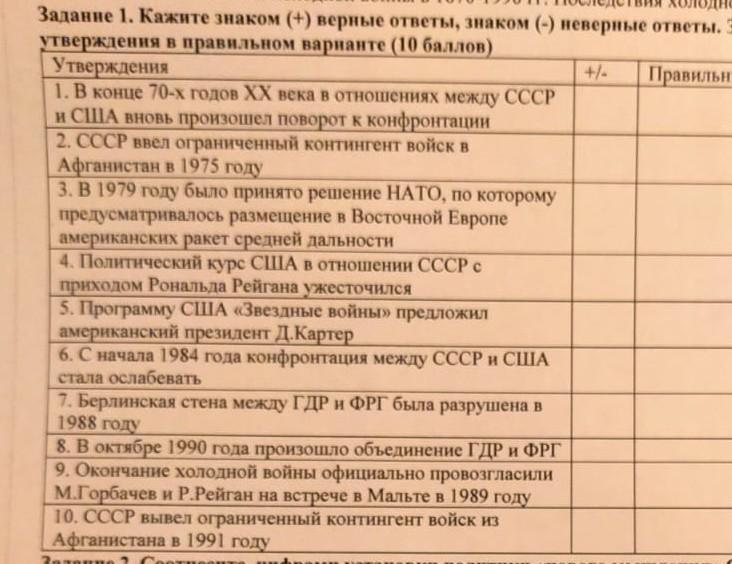Предмет: История,
автор: asazazazazazel
укажите знаком + правильные ответы, знаком - не правильные. Напишите к неверные утверждения в правильном варианте.
Приложения:

Ответы
Автор ответа:
0
Ответ: 1. +Конфронтация ужесточилась
2.- СССР ввёл войска в Афганистан в 1979.
3.+ Да,решение было,размещение "Першинг-2"
4.+ ужесточения курса с приходом Р.Рейгана
5.- предложил Р.Рейган.
6.-конфронтация усилилась
7.-1989 год.
8.+ 1990 год,хотя можно поспорить. Официально - да.
9.- в 1991 году,подписание акта.
10.- 1988 год,начало вывода войск из Афганистана.
Объяснение: Ну примерно так.
Похожие вопросы
Предмет: Русский язык,
автор: Alinka6210
Предмет: Русский язык,
автор: аружан77
Предмет: Русский язык,
автор: Alinka6210
Предмет: Математика,
автор: Ilyakuzaev